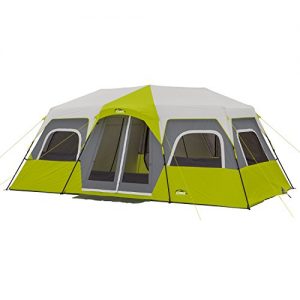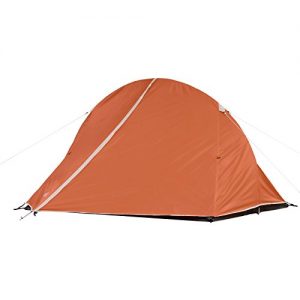Large Camping Tent – Tips to Help You Choose the Best Tent for Your Camping Trip
So you’re considering a large camping tent. Great, sounds like fun! But today there’s more to buying a tent than just picking one up at your local big box store.
Large Camping Tents – Many to Choose From
Most people are familiar with a dome camping tent. These are the large camping tents that are shaped like a big “dot,” (do you remember those little rounded candies?) or “mound” shape.
Dome tents typically allow enough headroom to stand in the center, but floor space is limited. The dome design provides for a lightweight tent with good wind and weather-withstanding abilities, but most people who use this type of tent are planning to sleep in it only, and not spend a lot of time inside.
Dome tents are lighter because they use fewer poles – sometimes only one or two – and are quite simple to set up, often needing only one person.
There are special tents designed for severe weather, for example, the tunnel tent which looks like a a roll with hoops inside. This large camping tent design is perfect for camping where you expect strong – even violent – winds or snow conditions. Those who are planning to travel to Mt. Everest would be well-advised to consider this type of shelter.
If you’re thinking about a camping trip with your family and you’d like more headroom than a dome tent, you might want to look closely at a cabin tent.
These tents are heavier than a dome tent, but will allow more space for large parties. A cabin tent looks like a cabin, with walls that go nearly straight up. It will provide room for several cots or air mattresses, and many cabin tents also have an attached screened room to set up a picnic table or store gear.
A cabin tent design will give campers the ability to stand completely erect in the tent, since many of them reach at least 7 feet tall.
A disadvantage to a cabin tent is that you will most likely need more than one person to set up the tent. Cabin tents can be quite heavy, perhaps 40 or 50 pounds, and will require several tent poles. However, if you’re planning to spend a lot of time inside due to weather or bugs, it may be just the solution you’re looking for.
Tent Fabrics – Today’s Materials Make a Difference
Most tents these days are made of rip-stop nylon or a blend of polyester and cotton. There are still a few canvas tents made, but since canvas can be very heavy, it is more rare. The advantages of nylon and poly-cotton are that they are very lightweight.
Also beneficial with nylon and poly-cotton is that these materials are quite rain and weather resistant. Particularly if you put on the rain fly, it is unlikely that you will get rain inside your tent.
We’ve found in our nylon dome tent that the rain fly will shed the water when it rains, and we’ve only gotten wet when one of us leans against the nylon. Then the water will soak whatever part is leaning against the tent!
Some people have commented in reviews that the seams of their large camping tents have leaked. We’ve never had that problem with our dome tent, but it is not a bad idea to get a seam sealer kit for yours, just in case.
There’s nothing so uncomfortable as lying in a puddle!
What Can You Expect to Spend on a Large Camping Tent?
Good question. Large camping tents typically start at about $60 and can go up to as much as $600, depending on the features.
You’ll want to consider a few factors, including what type of weather you’ll need your tent to be able to withstand. For example, if you’re planning a camping and fishing trip in the middle of July in Arizona, then you won’t need to buy a tent that can withstand snow and blizzard conditions.
Bear in mind that your large camping tent will need to provide ventilation for your weather conditions, as well as possible rain protection.
Next factor to consider is how many people you’ll be housing. Is it just you and a buddy? Or are you bringing the whole family as well as the in-laws? Dome tents tend to allow room for 2 to 4 people, but if you will be sharing space with many, you may want to look seriously at a cabin tent.
A large camping tent of modest proportions will run about $200, and a larger tent can be in the neighborhood of $300 or more.
Check the Reviews!
One benefit of shopping online today is that you can take advantage of the reviews others have posted about their large camping tents. Read them! We’ve found that someone else’s observations and experiences can be very helpful.
That way you can make an informed decision about which large camping tent will be the best fit for your family.
Article Source: Large Camping Tent – Tips to Help You Choose the Best Tent for Your Camping Trip










